Mutually Exclusive Events – GCSE Maths
Introduction
- Studying Mutually exclusive events are essential in probability because they help us analyze different types of real-world situations where outcomes interact in different ways.
- We learn mutually exclusive events in probability to understand situations where two events cannot happen at the same time.
What are Mutually Exclusive Events?
- Mutually exclusive events are events that cannot happen at the same time.
- For example: When you roll an ordinary dice, you cannot get a 3 and an even number at the same time.
- Two events A and B are Mutually exclusive if,

This means there is no overlap between the two events.
- Mathematically,
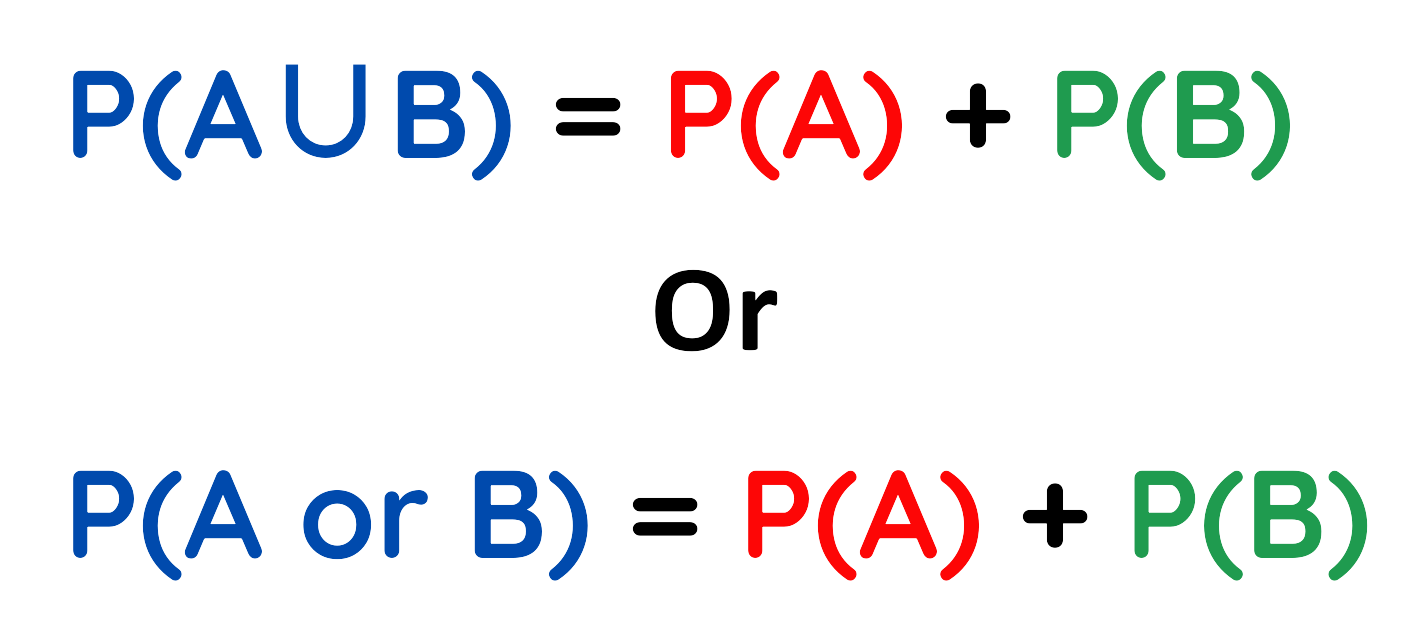
Steps To Solve The Mutually Exclusive Events
- Here are the steps to solve problems in probability:
Steps To Solve:
- Step#1: Identify Events
- Step#2: Use Formula
- Step#3: Calculate the Probability
 Solved Example
Solved Example
Problem: A fair six-sided die is rolled. What is the probability of rolling a 2 or a 5?
Solution:
Step#1: Identify Events:
- Event A: Rolling a 2.
- Event B: Rolling a 5.
Step#2: Use Formula:

Step#3: Calculate the Probability:
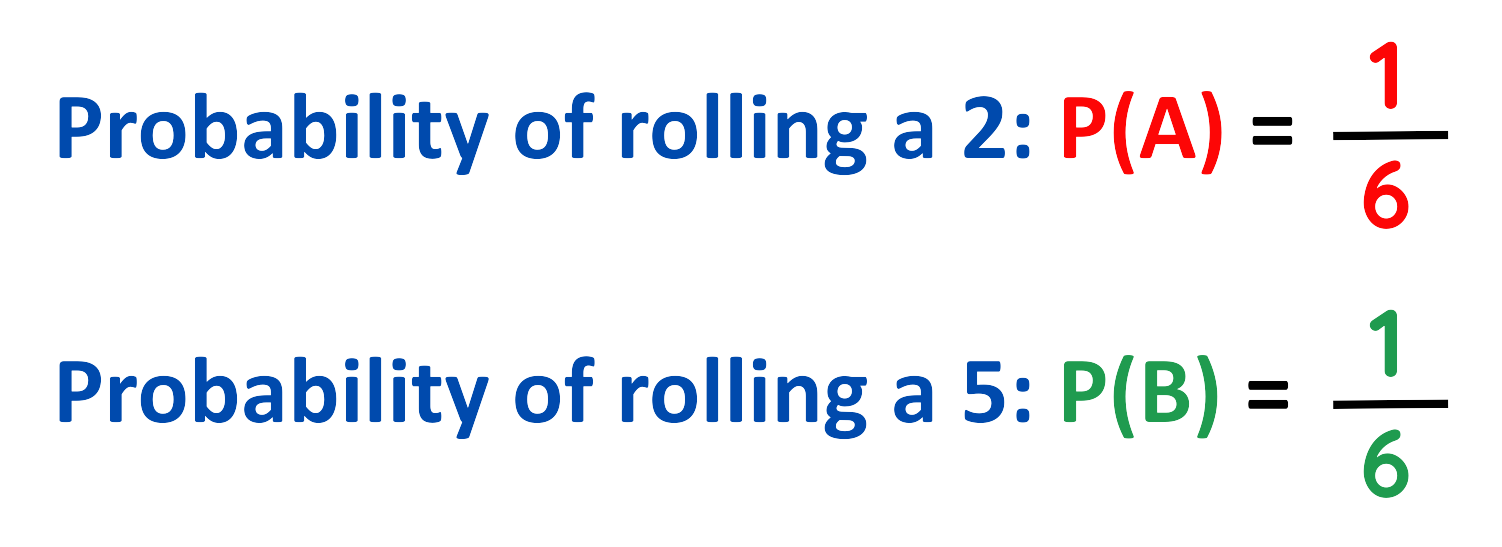
Put the Values in formula,

The Probability of rolling a 2 or a 5 is 1/3
Final Answer: 1/3
 Solved Example
Solved Example
Problem: A bag contains 3 red marbles, 2 blue marbles, and 5 green marbles. If one marble is drawn at random, what is the probability that it is red or blue?
Solution:
Step#1: Identify Events:
- Event A: Drawing a red marble
- Event B: Drawing a blue marble
Step#2: Use Formula:

Step#3: Calculate the Probability:
Total marbles: 10 marbles
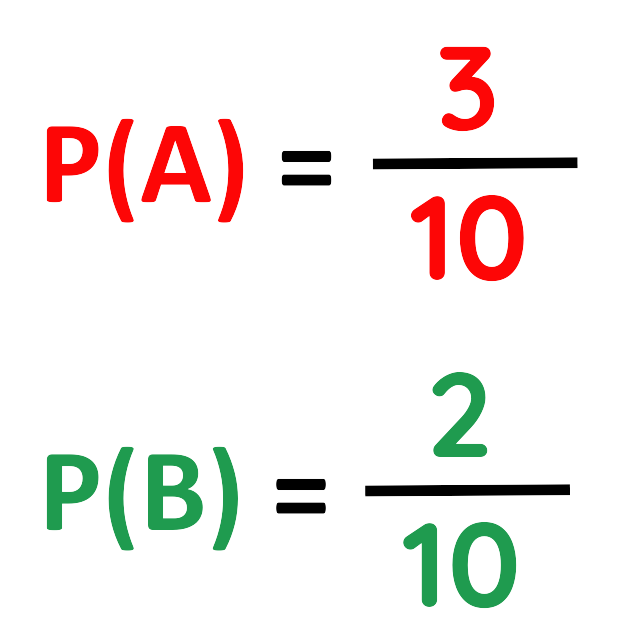
Put the Values in formula,
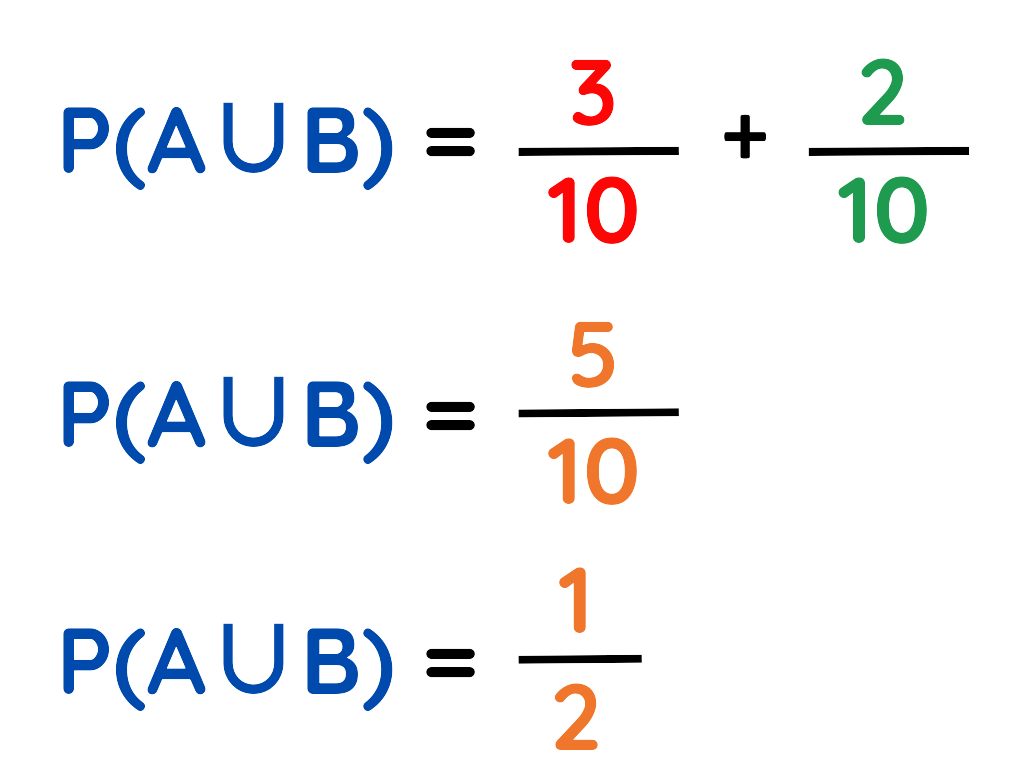
The Probability of drawing a Red or Blue marble is 1/2
Final Answer: 1/2
 Solved Example
Solved Example
Problem: A card is drawn from a standard deck of 52 cards. What is the probability that the card is either a Heart or a Club?

Solution:
Step#1: Identify Events:
- Event A: Drawing a Heart: 13 Hearts
- Event B: Drawing a Club: 13 Clubs
Step#2: Use Formula:

Step#3: Calculate the Probability:
Total cards: 52 cards
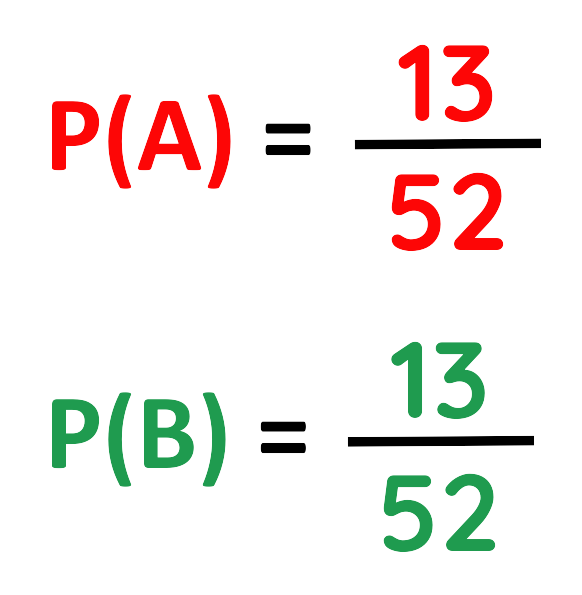
Put the Values in formula,
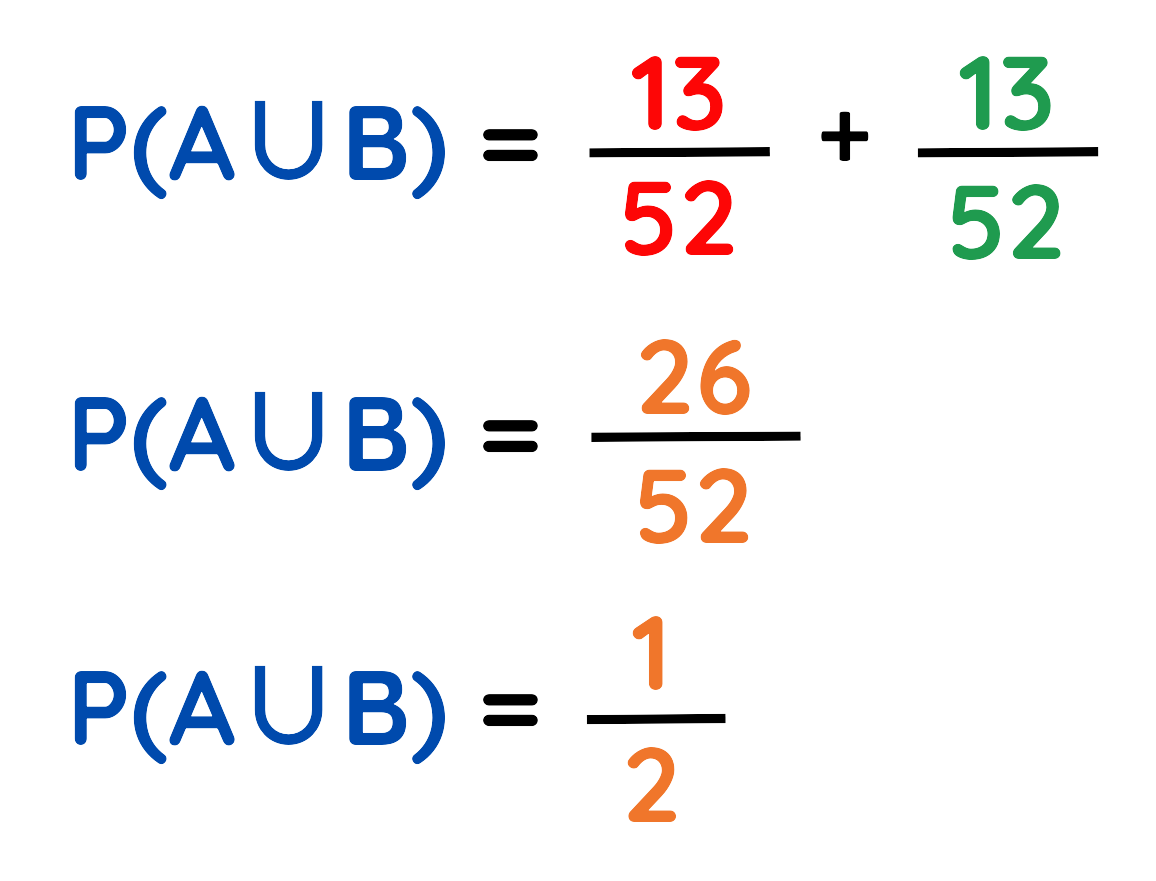
The probability of drawing either a Heart or a Club from a deck is 1/2
Final Answer: 1/2
 Solved Example
Solved Example
Problem: In a class of 30 students, each child likes different subjects, such as
- 12 students like Math(M)
- 8 students like Science(S)
- 10 students like History(H)
If a student is selected at random, what is the probability that the student likes math or science?
Solution:
Step#1: Identify Events:
- Event A: Student like Math: 12
- Event B: Student like Science: 8
Step#2: Use Formula:

Step#3: Calculate the Probability:
Total Students: 30
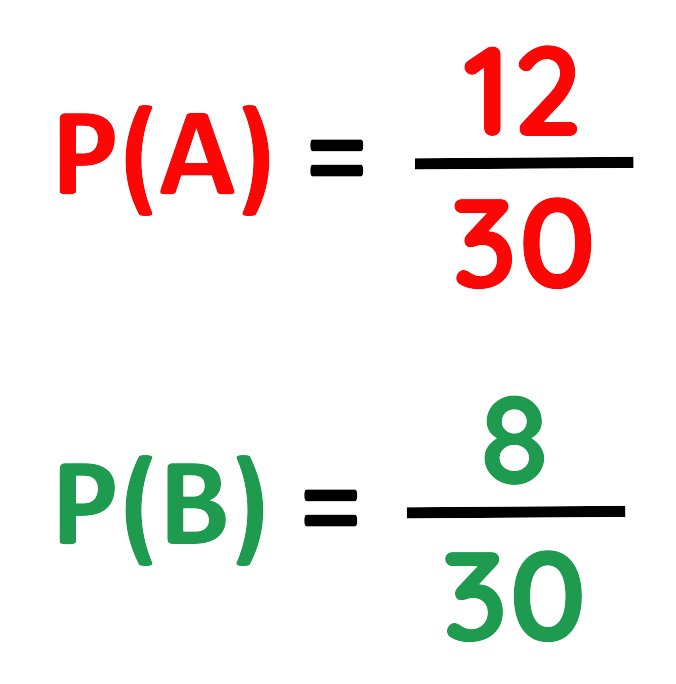
Put the Values in formula,
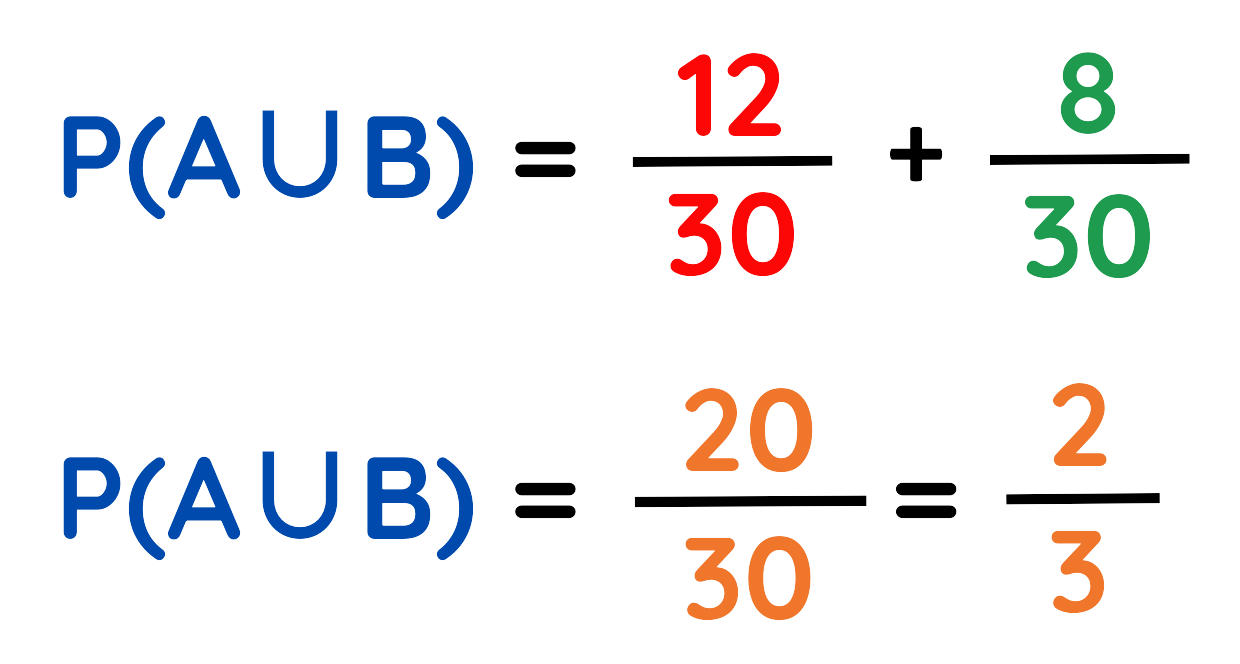
The probability that a randomly chosen student likes either math or science is 2/3
Final Answer: 2/3
 Solved Example
Solved Example
Problem: A pizza is cut into 8 equal slices:
- 3 slices have cheese topping(C)
- 2 slices have pepperoni topping(P)
- 3 slices have veggie topping(V)
If a person randomly picks one slice, what is the probability that it is cheese or pepperoni?
Solution:
Step#1: Identify Events:
- Event A: Cheese slices: 3
- Event B: Pepperoni: 2
Step#2: Use Formula:

Step#3: Calculate the Probability:
Total Slices: 8
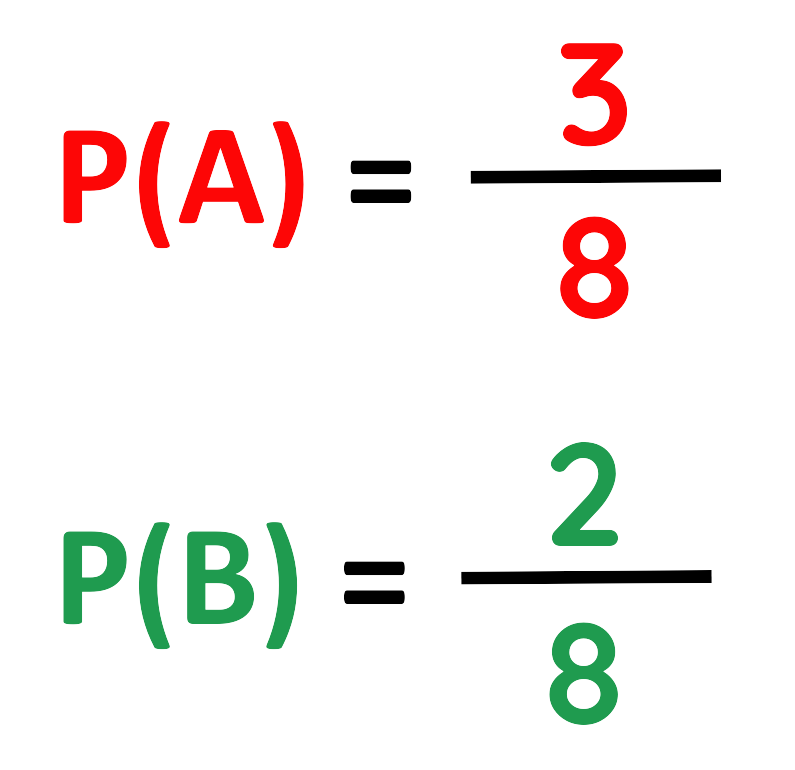
Put the Values in formula,
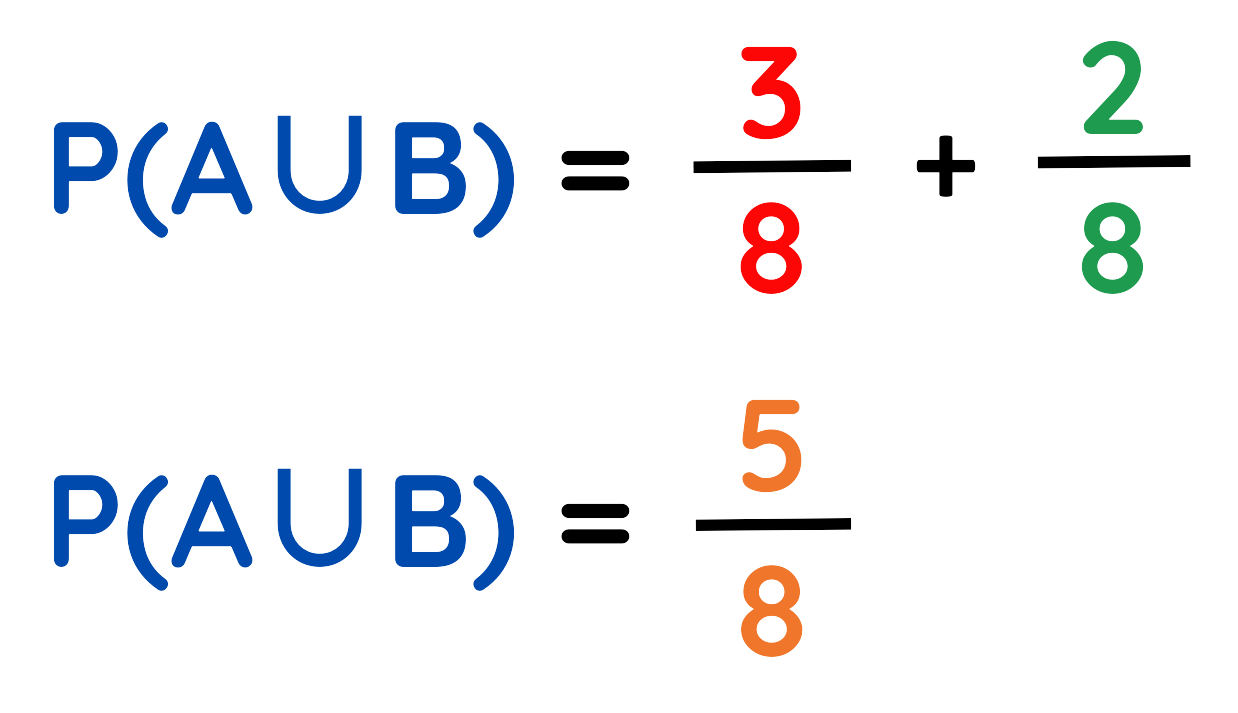
The probability of picking a cheese or pepperoni slice is 5/8
Final Answer: 5/8

